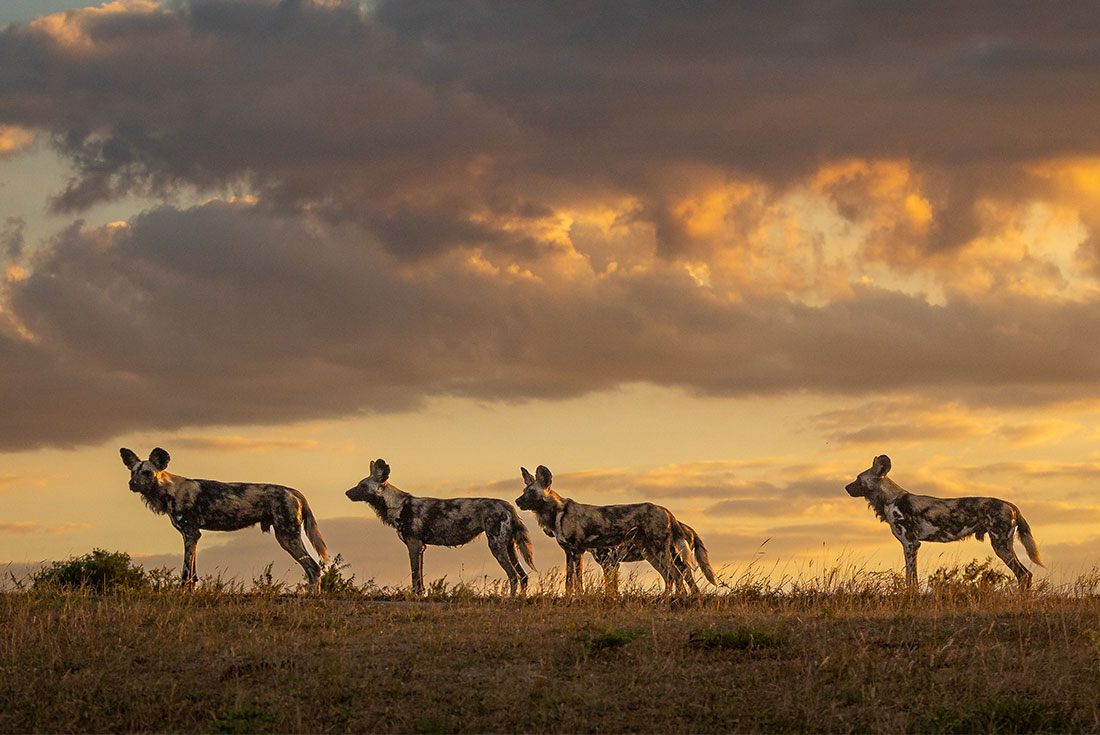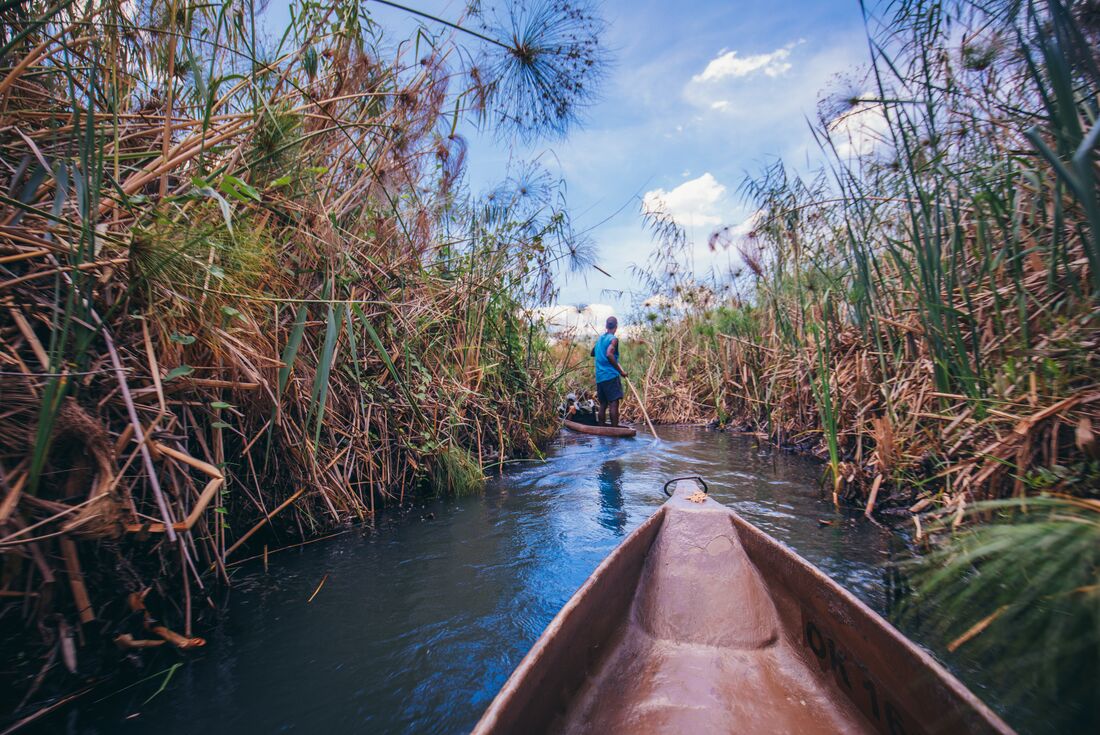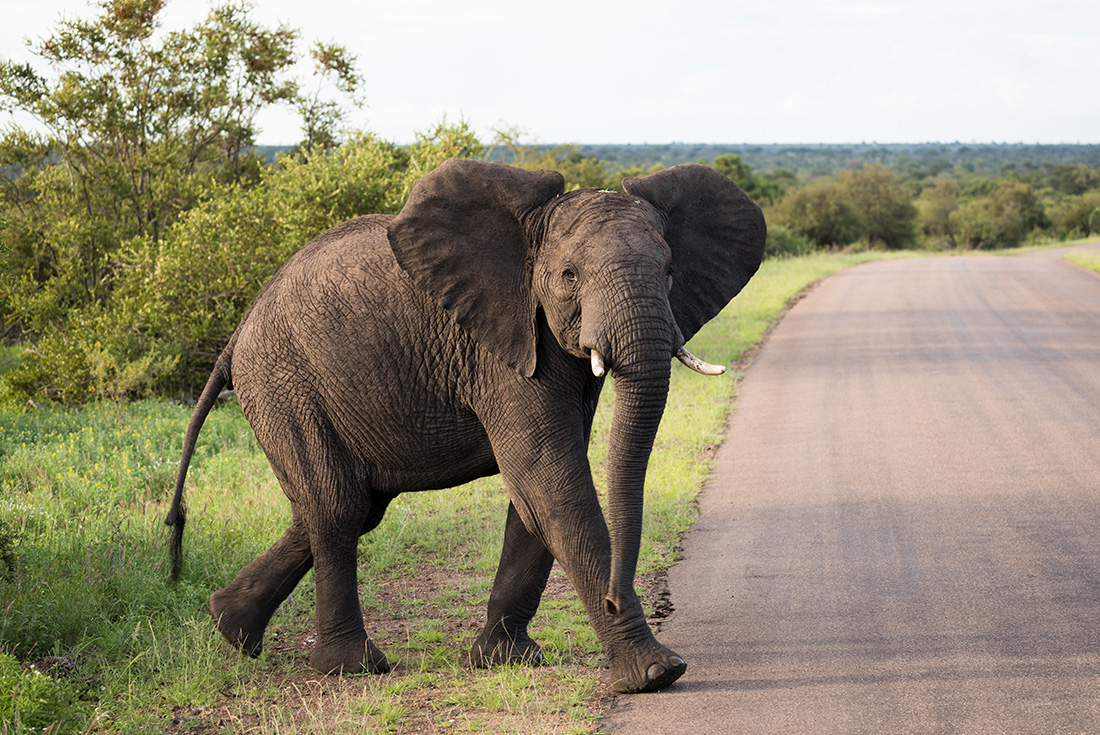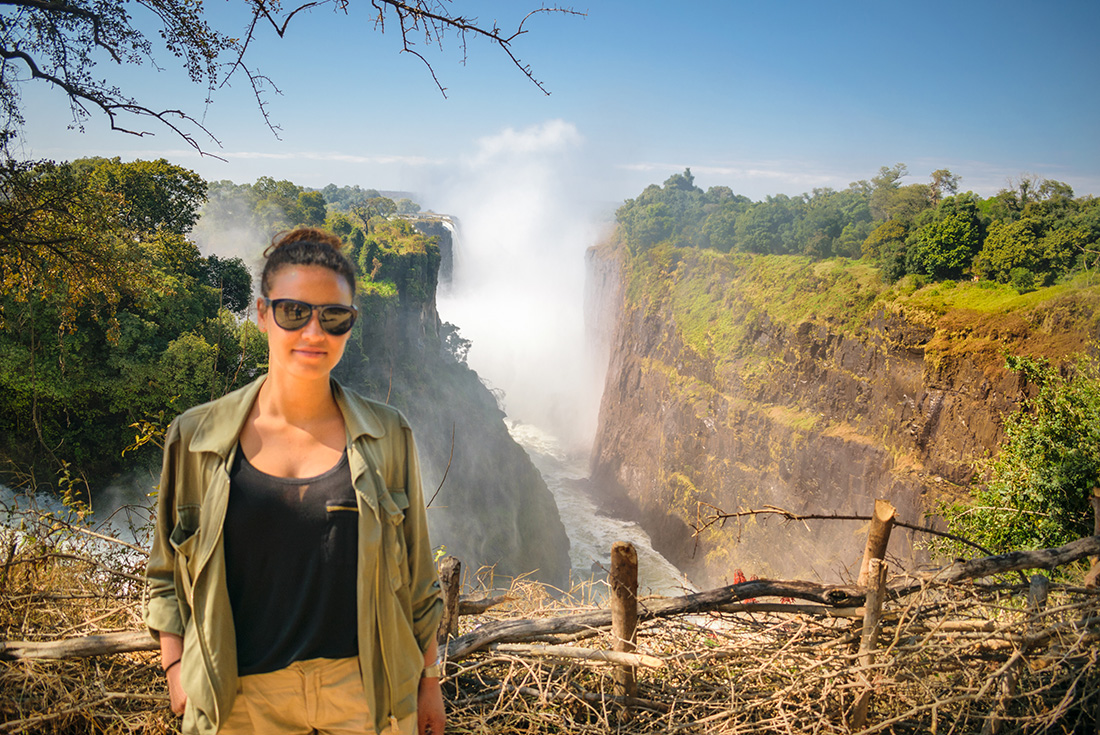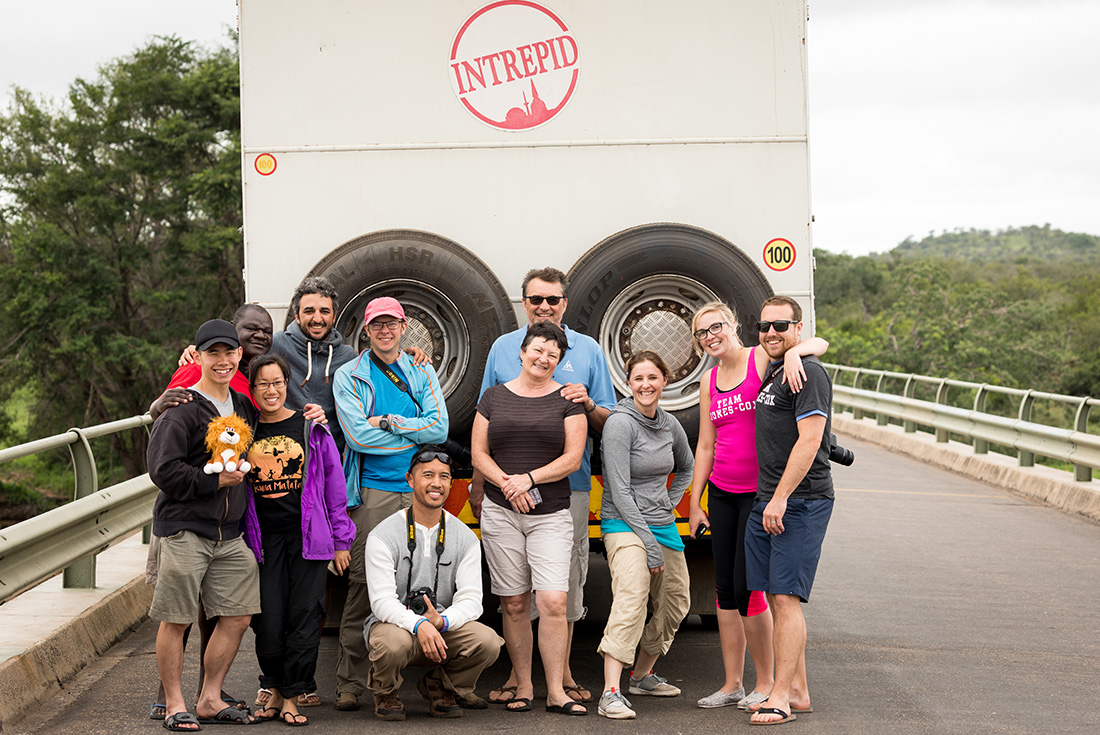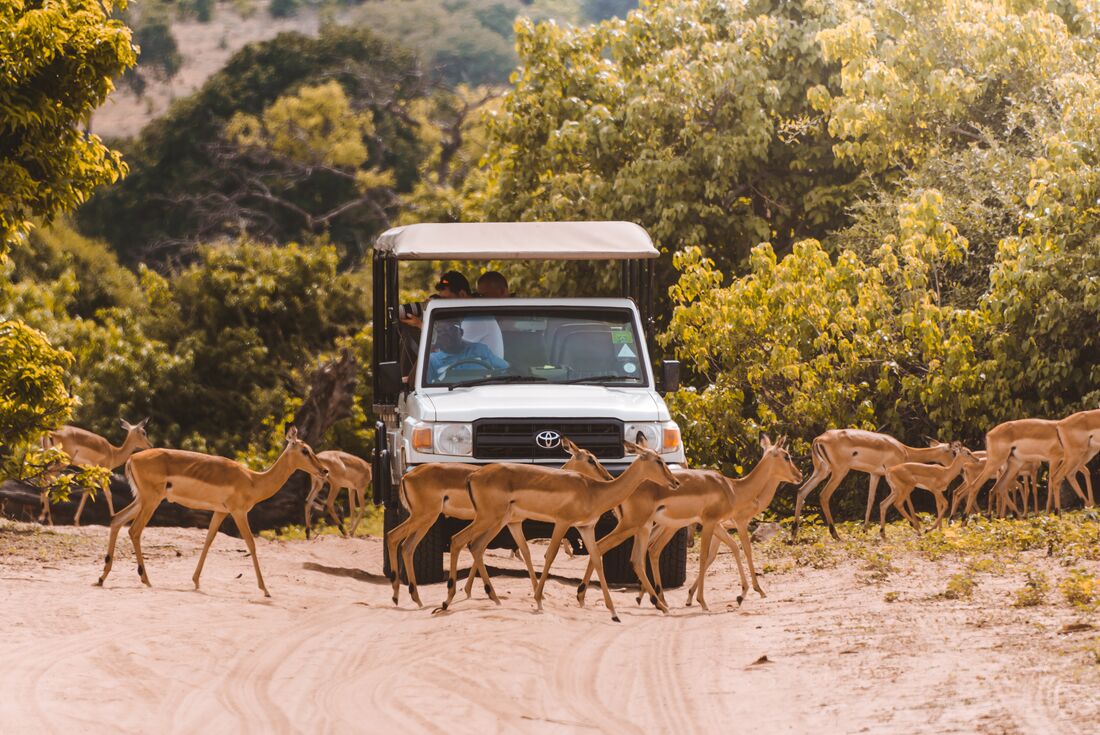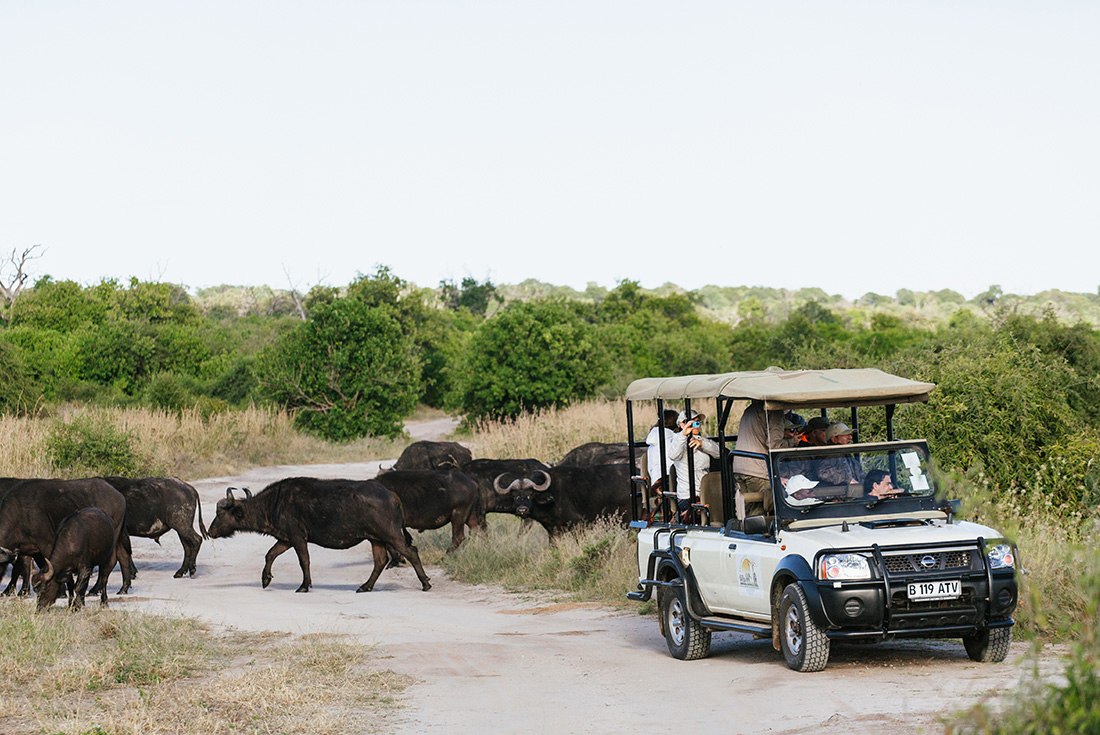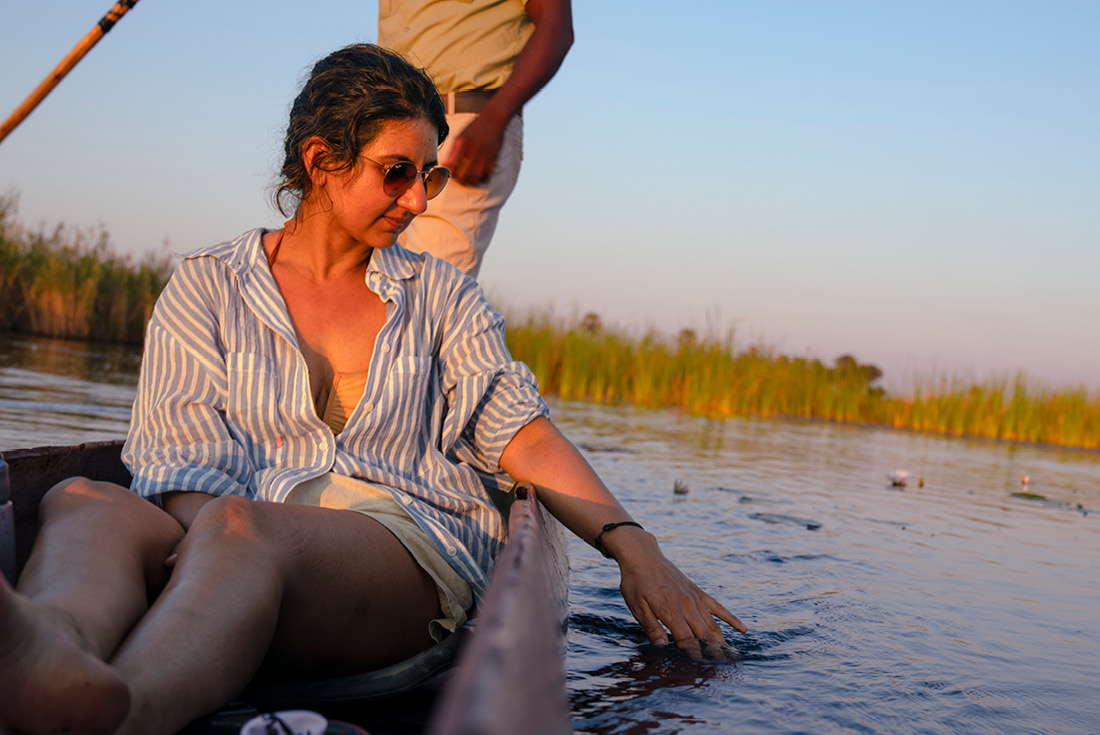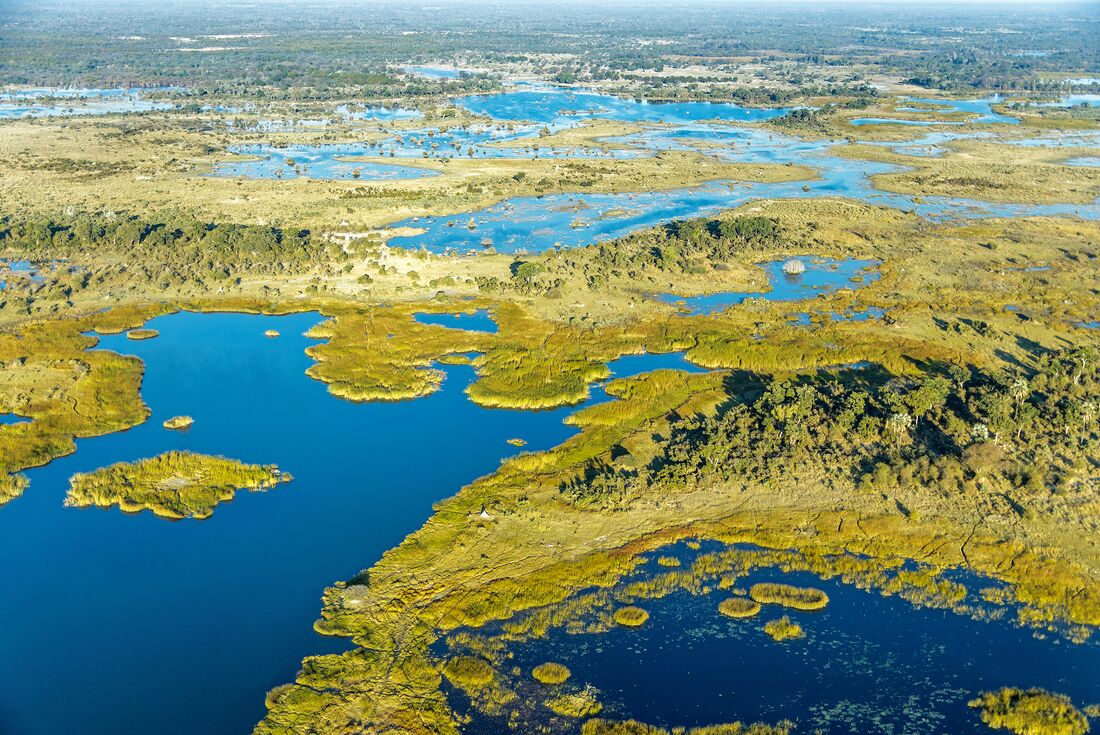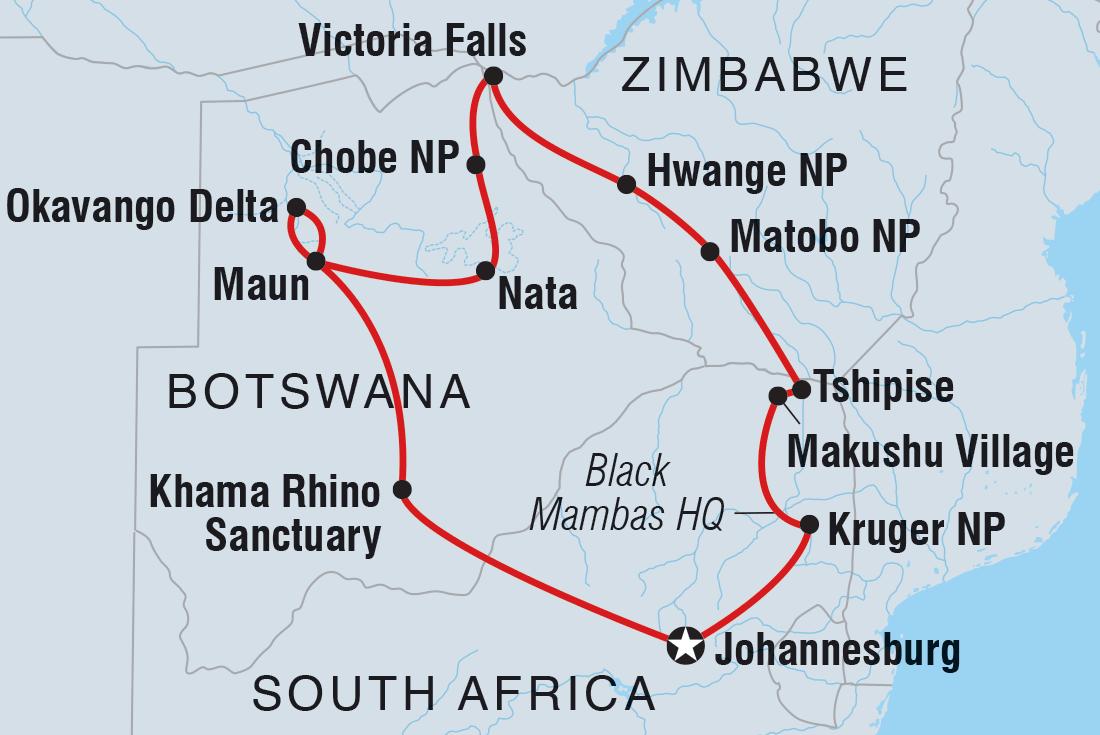SUMMARY
Discover Southern Africa's waterways, national parks and the wildlife that calls them home on this 18-day adventure. Canoe down the lush waterways of the Okavango Delta, watch hippos wallowing along the shores of the Chobe River, safari in the vast parks of Hwange, Kruger and Matobo and sleep under the stars in campsites, a bush camp on the Delta, and a village homestay. Join an adventure through southern Africa’s most beautiful landscapes in search of elephants, lions, rhinos, warthogs and leopards.
TOTAL DURATION : 18 Days
GROUP SIZE : MIN 1 MAX 22
TOUR ITINERARY AND DATES
START : Johannesburg
END : Johannesburg
COUNTRIES VISITED : Botswana,South Africa,Zimbabwe
Validity : 01 JAN 2025 To 31 DEC 2025
Day :1
Location : Johannesburg
Sawubona! Welcome to South Africa. Your adventure begins in Johannesburg with a welcome meeting at 6 pm tonight. If you arrive early, maybe visit the eye-opening Apartheid Museum to start your journey with some crucial history before meeting up with your group. After the meeting, why not head out for an optional group dinner and get to know your newfound travel companions. Your leader can point you in the right direction with the best bar and restaurant recommendations.
Day :2
Location : Khama Rhino Sanctuary
Leaving South Africa behind, cross the border into Botswana this morning and travel towards the Khama Rhino Sanctuary. Situated on the edge of the Kalahari Desert, the Khama Rhino Sanctuary has drastically changed from a former hunting area to a conservation project. Built to protect Botswana's only remaining populations of both black and white rhinos, the sanctuary is also home to other wildlife including zebras, giraffes, leopards, ostriches and wildebeest, all of which can be seen grazing the many waterholes. Visiting this project benefits local communities and directly contributes to protecting the endangered white rhino. Later, you’ll head out on a dusk game drive to hopefully spot the rhinos when they’re most active.
Day :3
Location : Maun
This morning you’ll drive to Maun – the gateway to one of the world's most complex ecosystems, the Okavango Delta. A 16,000 square km maze of lush wetlands and waterways teeming with wildlife, this place is unlike anywhere else in the world. When you arrive, there will be an opportunity to stock up on any supplies you might need for your adventure ahead. Look out for the resident hippos, crocodiles, elephants and big cats in the delta. The animals aren’t the only drawcard, though! The waterscapes and shimmering horizon are enough to write home about.
Day :4
Location : Okavango Delta
Today you’ll get right in the action and jump aboard a traditional mokoro – a dugout canoe steered by friendly local 'polers'. Cruise the Okavango waterways and look out for the delta's unusual wildlife and exotic birds. Spend some time today exploring the maze of lagoons, lakes and streams on foot too, with your experienced local guides. Tonight, you’ll camp on a remote island right in the heart of the wilderness! Fall asleep to the humming and buzzing of the African heartlands and soak up one of those ‘I’m so far from home’ moments.
Day :5
Location : Okavango Delta
Wake up nice and early this morning and head out on a sunrise walk. Along the way, keep watch for elephants and if the timing is right, you might also come across some Cape buffalo! These noble-looking beasts are more dangerous than they look and their horns double as bone shield that's fittingly known as a 'boss'. Return to camp for breakfast, where you’ll have the rest of the day to relax. A refreshing swim, or maybe a nap could be on the cards – both good ideas in the warmer part of the day. Alternatively, take another optional mokoro trip to soak up that serene river atmosphere.
Day :6
Location : Maun
After taking down your camp, return to the ‘poler’ station by mokoro, before continuing to Maun by vehicle. When you arrive, you’ll have the option to embark on a scenic helicopter flight over the Okavango Delta, where you'll be treated to a breathtaking bird's eye view of the shimmering waterways and lush landscapes, a truly magical perspective of one of the world's most unique ecosystems.
Day :7
Location : Nata
Get up early and hit the road for Nata. This small town sits near the stunning Makgadikgadi Salt Pans, which are some of the largest on Earth covering around 12,000 square km. This afternoon, you’ll take an excursion in an open-air vehicle to explore these seemingly endless plains in the Nata Bird Sanctuary. Surrounded by the Kalahari Desert, the pans are naturally dry and salty for a large part of the year. During this time, the arid landscape has an eerie feel and the heat mirages can make you feel disoriented. After the rains hit, the pans become a grassy refuge for migratory birds and animals – a perfect setting for wildlife lovers!
Day :8
Location : Chobe National Park
Hit the road this morning and make tracks for Chobe National Park – Botswana's first ever national park. This area is perhaps best known for its high concentration of elephants, which can often be seen swimming in the Chobe River. The river also attracts wallowing hippos, crocodiles by the water's edge, cheetahs, lions and a huge variety of birdlife. When you arrive, you’ll be treated to a sunset cruise on the Chobe River – an ideal way to spend the afternoon, watch the sun descend and toast to another day in Africa.
Day :9
Location : Victoria Falls
Why not wake up early and see Chobe National Park from a different perspective with an optional morning game drive. After, the group will travel to Victoria Falls, crossing the border into Zimbabwe just in time to have lunch on the banks of the Zambezi River. Then, you’ll have free time to experience the sights and sounds of the mighty falls at your own pace. This thundering curtain of water is about 1.7 km wide, falling 108 m into a narrow gorge below. In the wet season, the spray can rise an incredible 400 m as the falls become a raging torrent. In the dry season, the view of the falls is unobstructed by spray, and you can see the little islets in the river below. This evening, dine on a traditional a traditional Zimbabwe dinner hosted by a women's cooperative within the community. Learn how this initiative not only provides employment opportunities but also benefits the Victoria Falls community as a whole.
Day :10
Location : Victoria Falls
Today, why not check out the Zimbabwe side of the falls, which offers the broadest view of this colossal natural wonder. Alternatively, the scenic helicopter flights are incredible – if you opt for one, the Zambezi Helicopter Company (CAA Zimbabwe) is the only operator Intrepid endorses. Explore as you wish, but please be sure to return to camp by 6 pm for a meeting with your new group. After, you could get your new group together and get acquainted over a pint at one of the local breweries or watch as the sun goes down on an optional river cruise.
Day :11
Location : Hwange National Park
If you haven’t seen Victoria Falls yet, this morning is your last opportunity. You’ll have to arrive at opening time (6 am from September to April and 6.30 am from May to August). This is a great time to see the falls, as sunrise casts a unique light on the cascades and there are little tourists to interrupt the view. Then, you’ll leave Victoria Falls behind and head to Hwange National Park via the Victoria Falls Wildlife Trust – one of the projects The Intrepid Foundation supports. Here, you can learn about the rescue and rehabilitation of wildlife, human-wildlife conflict and the Trust’s role in anti-poaching. There may also be a chance to meet any rescued or orphaned wildlife currently in their care. Hwange National Park became the royal hunting grounds of the Ndebele warrior-king Mzilikazi in the early 19th century and was set aside as a national park in 1929. Today, Hwange boasts a tremendous selection of wildlife, with over 100 species of mammals and nearly 400 bird species. The elephants of Hwange are world famous – you'll find one of the largest elephant populations in Africa here! Spend this afternoon exploring and discover the arena in an open 4WD vehicle with expert local guides.
Day :12
Location : Matobo National Park
Make tracks for Matobo National Park this morning. Shortly after leaving Hwange, stop at the Painted Dog Conservation Centre. The loss of quality habitat and poaching are driving the painted dog (also known as African wild dog) towards extinction. Learn about how they protect and increase the range and numbers of painted dogs in Zimbabwe and the Hwange ecosystem as a whole. Then it's on to Bulawayo, Zimbabwe's second-largest city. Take a stroll through the streets lined with old buildings and stop in at a local cafe or restaurant for lunch before heading to your camp for the next two nights. Home to a large population of black and white rhinoceroses that can be tracked on foot, Matobo National Park is also the site of the grave of Cecil John Rhodes – the founder of Rhodesia and the De Beers diamond company. The Matobo area has great spiritual and cultural significance to the local people and there are many sites within the park where important ceremonies still take place.
Day :13
Location : Matobo National Park
Matobo National Park has an incredibly diverse range of birdlife and wildlife and is home to both Black and White rhino. This morning, you have a unique opportunity to track white rhinos on foot with the help of an expert local guide. There will also be the chance to spot other game – the park is home to klipspringers, leopards, warthogs and springhares. You can also learn about the various local plants and trees, including wild pear and paperbark, while discovering San paintings and the rock formations of the park. After lunch, venture to a nearby village and meet some of the local people. Learn about how it was when they were living in the hills and meet with some of the local personalities – including elderly chief Pondo.
Day :14
Location : Tshipise
This morning, leave Zimbabwe behind and cross a very busy border post – the only direct border crossing between Zimbabwe and South Africa. You should arrive at your camping site on the edge of Honnet Nature Reserve in the late afternoon. Relax and enjoy the extensive facilities available including an indoor and outdoor pool, putt putt, nature trail and optional game drives.
Day :15
Location : Makushu Village
Make your way to Makushu – a small village in the Limpopo Province of South Africa. When you arrive, you’ll be met by a local village guide. You’ll be staying with homestay host mothers in their family homes. With no two days the same for local villagers, you might be taking part in activities like beading, dancing, beer tasting and cooking. Tonight, you can interact with the local villagers and learn the traditional Venda ways.
Day :16
Location : Kruger National Park
After breakfast today, you’ll make the epic journey towards Kruger National Park. Along the way, you'll get the extraordinary opportunity to visit the Black Mambas headquarters, the world's first all-female anti-poaching unit made up of 36 young African women. Supported by the Intrepid Foundation, the Black Mambas are turning a traditionally male-dominated industry on its head, they’re putting their female prowess to work protecting the wildlife of Kruger National Park in an unconventional way. Discover how they find and destroy snares left by poachers, set up roadblocks, patrol park perimeters, and then get an exclusive inside look into their ops room. Afterwards, head to your campsite inside Kruger National Park and fall asleep to the sounds of the wild.
Day :17
Location : Kruger National Park
Today, you'll embark on a full-day 4WD safari in the vast Kruger National Park, a wildlife sanctuary comparable in size to countries like Belgium and Wales. Home to the iconic "Big Five"—lions, leopards, elephants, buffalo, and rhinos—Kruger offers an outstanding wildlife experience in one of the world’s premier conservation areas. In addition to spotting these majestic animals, keep an eye out for giraffes, zebras, hippos, and the elusive, endangered African wild dog. As you venture deep into prime wildlife viewing zones, you'll likely encounter a diverse array of species, from graceful antelopes and elands to fast-moving cheetahs and powerful rhinos, all within the park’s breathtaking savannas and forests.
Day :18
Location : Johannesburg
It's time to head to Johannesburg. Along the way, you’ll take in amazing vistas at the 3 Rondavals viewpoint over Blyde River Canyon and Bourke's Luck Potholes. This is a magnificent lookout where cloud cover is usually at a minimum. Your African safari adventure comes to an end when you arrive in Johannesburg this evening. If you’d like to extend your stay, just speak to your booking agent ahead of time.
Reference : IT



